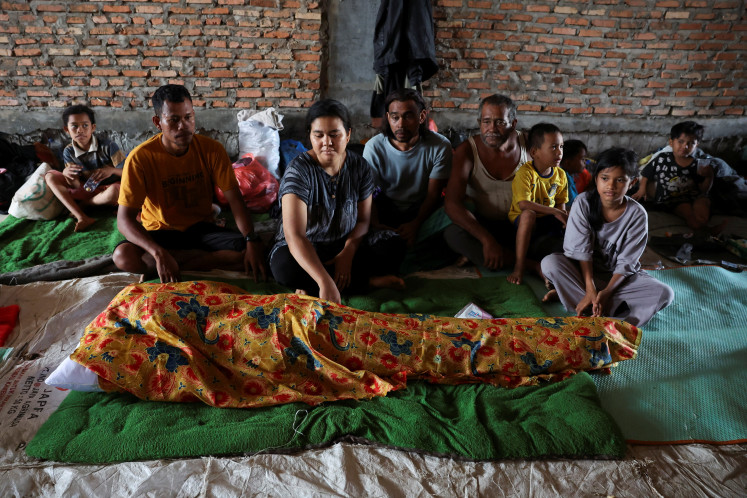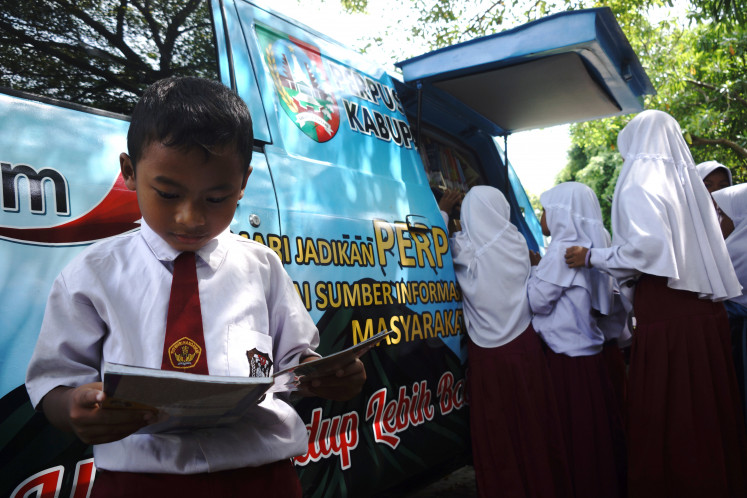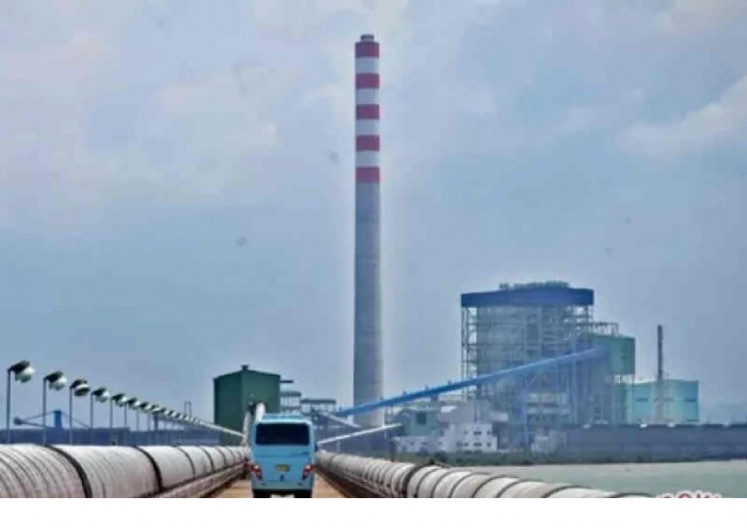Popular Reads
Top Results
Can't find what you're looking for?
View all search resultsPopular Reads
Top Results
Can't find what you're looking for?
View all search resultsUnder the seas in Komodo
Serene: A phinisi offering live-on-board (LOB) service on a calm sea near the Komodo National Park
Change text size
Gift Premium Articles
to Anyone
Serene: A phinisi offering live-on-board (LOB) service on a calm sea near the Komodo National Park.
It was 5:30 a.m., and our live-on-board boat (LOB) slipped off from the shore where it had moored for the night, and headed for a dive spot in Komodo National Park in East Nusa Tenggara.
About 45 minutes later, the boat stopped, the crew dropped anchor and the divers prepped their gear before getting into a speed boat to reach Taka Toko-toko, better known as the Castle Rock dive site.
'Remember, you must go down as fast as you can or you'll be swept away by the current. We'll meet at 5 meters,' Condo Subagyo, the CNDive Komodo dive guide, briefed the divers shortly before they took the plunge.
Castle Rock is a huge submerged mountain located in the northern part of Komodo. Its exposed location is a guarantee for strong currents, thus; divers need to adopt a negative entry method that requires them to plunge as fast as possible to avoid being swept away.
It did not take long for us to get down or to find several whitetip and blacktip reef sharks swimming around the site at a depth of just 15 meters.
There was another group who were also diving in the 29-degree-Celsius waters that morning, and just like us, were busy taking pictures of the sharks hunting for their breakfast.
Up close and personal: A manta zooms by, almost close enough to touch.
With visibility of around 15 meters horizontally and 20 meters vertically, it is the perfect spot to see grey reef sharks, groupers, doctor fish, Napoleon Wrasse and lots of schooling fish swirl and pass around the divers.
Just like Castle Rock, most dive sites in Komodo have diverse marine life. Its corals, both soft and hard, are healthy and very dense, becoming a comfortable home for thousands of fish, crustaceans and many other marine species.
'Komodo is very special and healthy. It's beautiful because it's well preserved, thanks to its National Park status. And the currents that allow you to see big fish are formed because of the meeting of the Indian and Pacific oceans,' Condo said.
Komodo National Park is located between the islands of Sumbawa and Flores and includes three major islands ' Komodo, Rinca and Padar ' and numerous smaller islands. Of the total 2,321 square kilometers, 67 percent is marine area with almost 100 dive sites, but only around 40 sites usually used for recreational diving.
Divers may find fish that can also be found else where, but in Komodo, you can always expect to encounter the jumbo version.
At the Crystal Rock dive site, for instance, divers get the chance to find big fish with every kick of their fins.
Rush hour: A school of fish brushes by a diver.
As our group was awed by the swirling small fish, and the ubiquitous 50-centimeters-in-diameter table coral, Condo asked us to come closer to him and pointed to his left while giving the hand signal for
Napoleon Wrasse.
We had seen lots of wrasse since our first dive in Komodo, but the size of this one pretty much stunned us. The 1.5 meter bluish green wrasse hid behind a coral as if trying to avoid us.
As we watched from afar, it slowly swam further away from us.
A dive in the limpid clear water of Crystal Rock should be made more than just once, as each dive will provide you with different sights and attractive shows by big fish, either singly or in schools.
But no underwater show in Komodo would be complete without the manta.
In Manta Alley, four giant manta rays, ranging from around 1 meter to 3 meters wide, greeted us at a depth of just 6 meters.
After we secured a position to watch their performance, the mantas suddenly left our sight only to come back a few seconds later with more companions.
Floating: A diver hovers above an immense coral table.
Watching a dozen or so manta rays dancing effortlessly and gracefully for about 25 minutes in the mild current threw us into a state of ecstasy for the whole day and beyond.
Komodo is not only about big fish, it also offers thrilling underwater experiences for adventurous divers.
With the guidance of an experienced dive guide, the extreme current, sometimes reaching more than 5 knots, in Gili Lawa Laut Strait, better known as the Shotgun, can be a safe playground for divers who crave more at the end of a dive.
But due to the distant location of the dive sites from the main port of Labuan Bajo, exploring Komodo by LOB is considered the best way to go. Currently, there are around 80 dive centers that offer an LOB service in Komodo. Some start their trips from Bali, Raja Ampat or Alor Island.
As a bonus, the LOB gives you the chance to eat, sleep and dive, and be entertained with a night sky full of stars, flying fish and even dolphin watching during the voyage.
'This is a complete dive trip. I've seen all I wanted to see, and even more. I will definitely come back again,' said Syanette Agnes from Depok.
' Photos by Eduart Dachi and Fransiska Nawita













